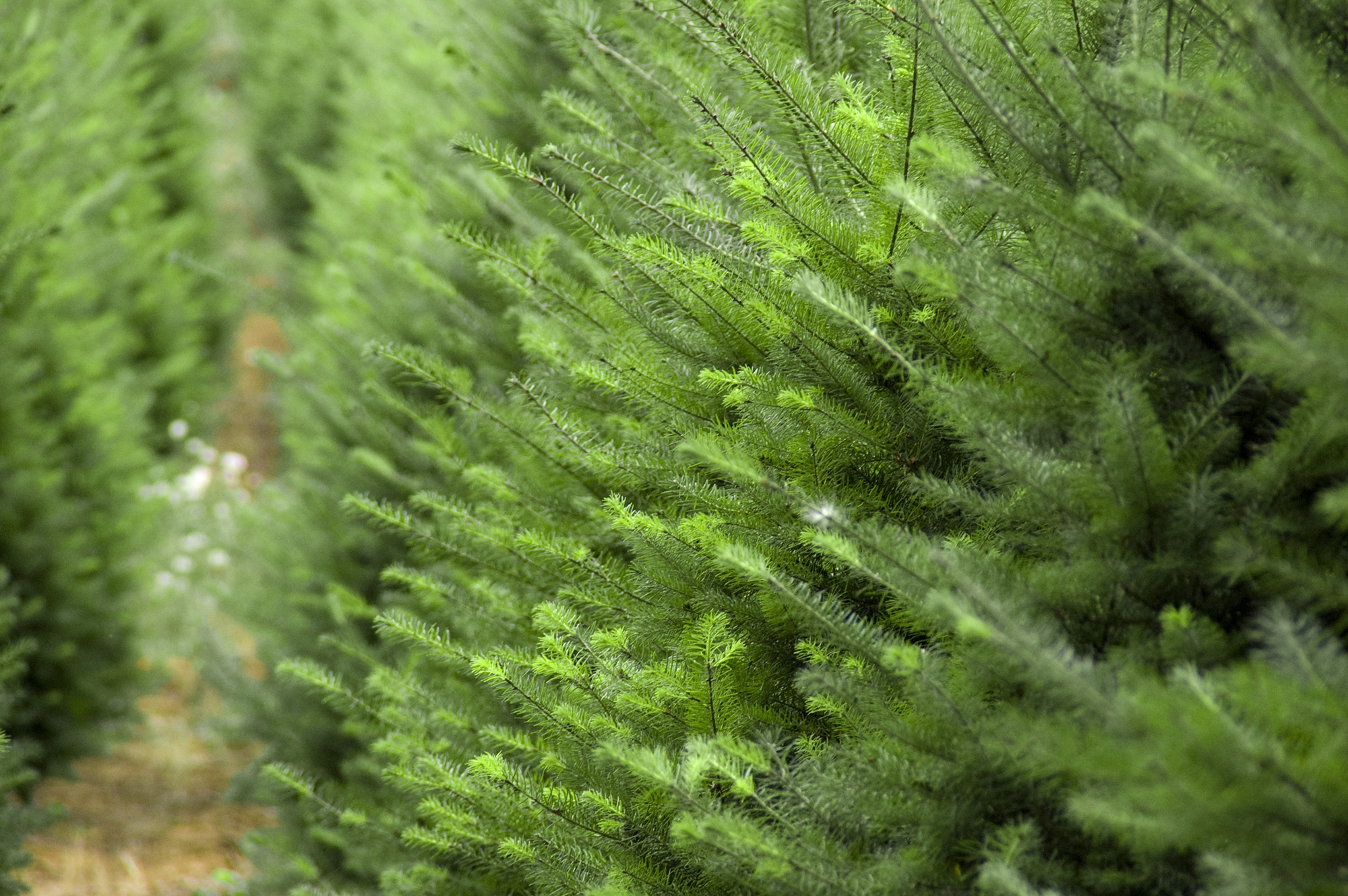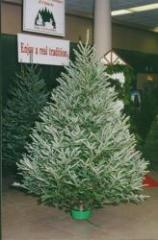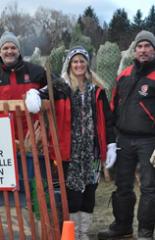
The Environmental Choice - Real Christmas Trees



In the fourteenth century, when hardly anyone knew how to read, churches held "miracle plays" to tell the people in villages and towns stories from the Bible. Special plays were held at special times of the year, in accordance with the early Christian Calendar of Saints. The play that was held every December 24, which was Adam and Eve's Day, was about the Garden of Eden. The play showed how Eve was tempted by the serpent, how she picked the apple from the forbidden tree and how the couple was expelled from Paradise. The time of year that the play was held created a problem for the actors and the organizers of the play. How do you find an apple tree with needles on it in the middle of the winter? In Germany, someone solved the problem by cutting down an evergreen tree, probably a spruce or pine, and tying apples onto it. As well, the tree was hung with round white wafers to remind the audience that even though Adam and Eve were expelled from Paradise, the birth of the baby Jesus Christ would bring redemption. The idea of a Christmas tree hung with apples amused people in Germany so much that before long many families were setting up Paradiesbaum, or Paradise trees, in their own homes. The custom persisted long after the miracle plays were no longer performed. Ever since, red and green, the colours of apples hanging on a pine tree, have been the official colours of the festive season
As the years passed the trees were loaded with many more things to eat in addition to apples. Gilded nuts and gingerbread cookies were hidden in the tree while marzipan candies, shaped like fruits and vegetables, were hung from the boughs. Brightly decorated eggshells, cut in half and filled with tiny candies, were set in the tree like birdnests. So many sweets were hung from the tree that some people called it "the sugar tree". On the Twelfth Night of Christmas, January 6, when it was believed that the Magi arrived in Bethlehem bearing gifts, the tree was shaken and the children finally were allowed to eat the sweets that fell from the tree. The wafers once hung on the Paradise tree were replaced with cookies in the form of hearts, bells, angels and stars. With time, perhaps because so many decorations were eaten before the tree was taken down, the cookies were replaced with decorations made out of thin, painted metal. When families in colder climates combined the decorations on the Paradiesbaum with the candles on a conifer tree, they created the Christmas tree that is still found in homes today.
 How to take good care of your Christmas Tree:More info..
How to take good care of your Christmas Tree:More info..
 Contact the CTFO office via convenient online email form, phone, fax, or mail...More info..
Contact the CTFO office via convenient online email form, phone, fax, or mail...More info..